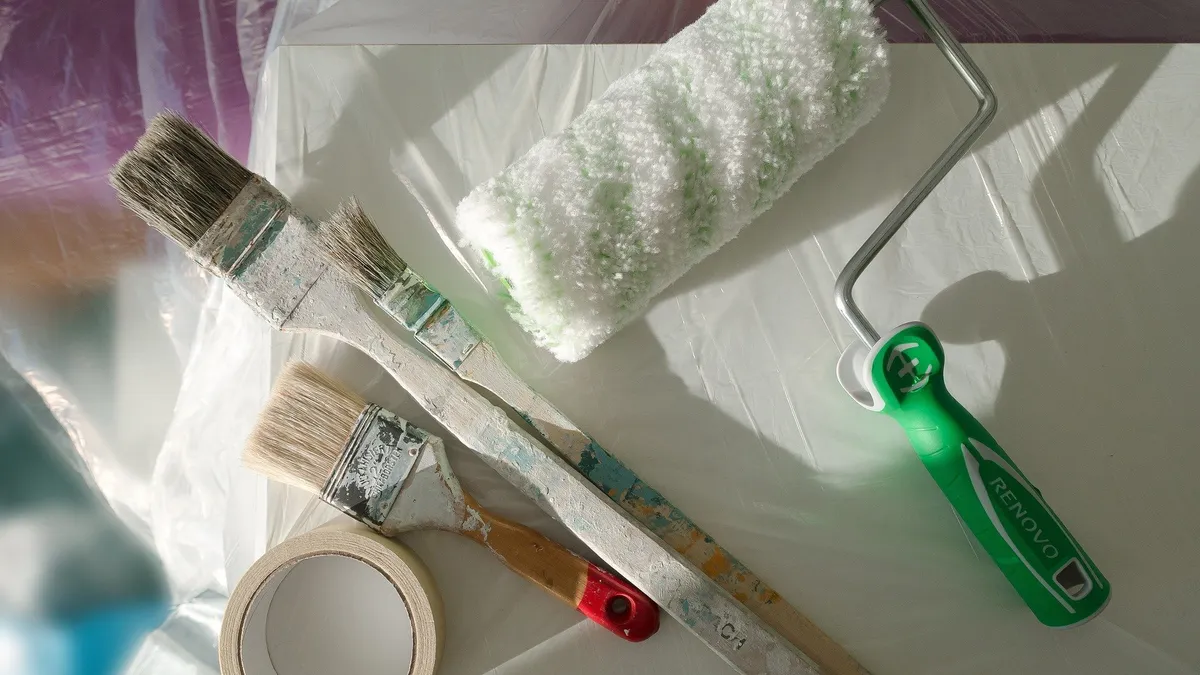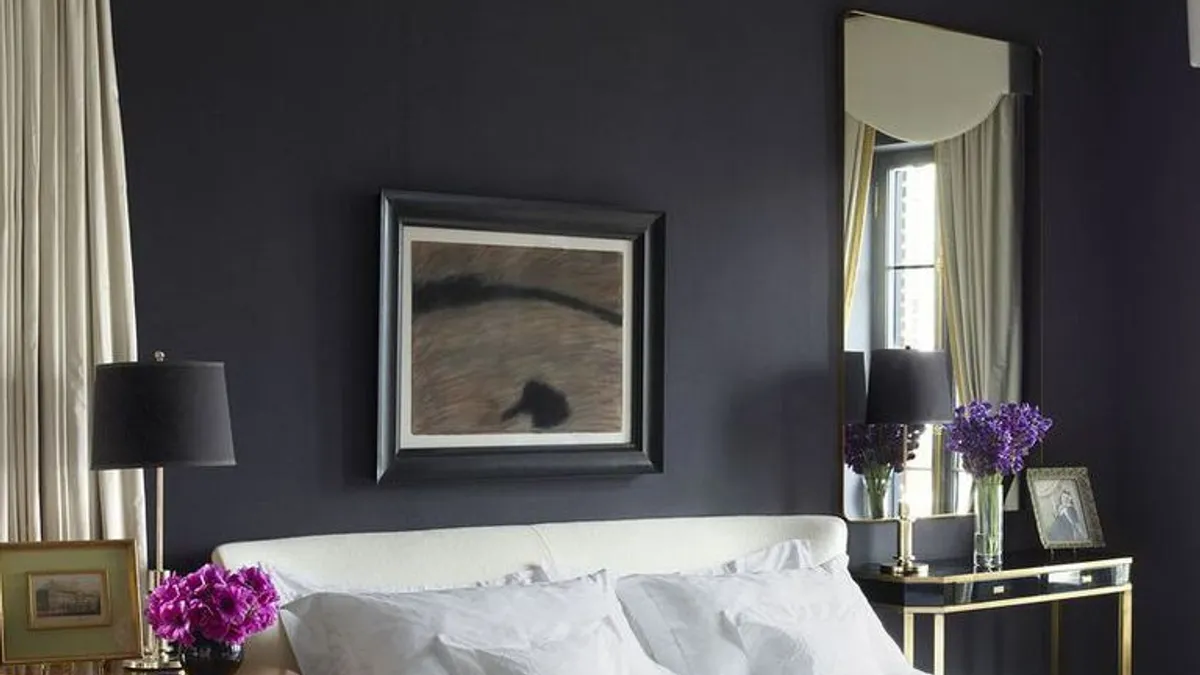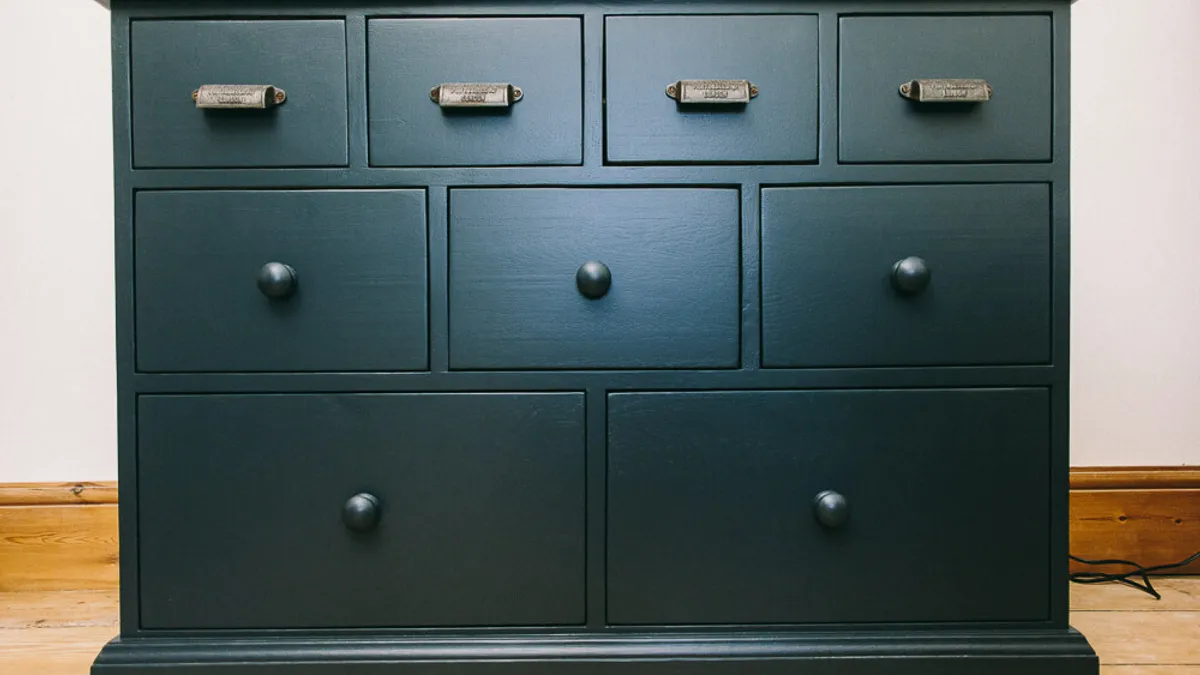The Best Eggshell Paints
What is eggshell paint & how are the best on the market are questions that we are often asked here at Painters World. That is why our team of experts have put together this handy guide of everything you need to know when it comes to eggshell paint, so you can find the right paint for you.

Paint Explained
It is crucial when explaining what eggshell paint is to put it into context. Paint comes in a range of finishes that vary in terms of their 'sheen', otherwise known as the amount of light they reflect. The more sheen a paint has, the more durable it is. This is why gloss and satin is often used on woodwork and metal as these areas are prone to scuffs, while lower sheen paints are used on interior walls & ceilings. These finishes include matt, eggshell, silk, soft sheen, satin & gloss.
- Matt - the 'flattest' finish of paint which is offers a very popular modern finish, although it has low durability which is why it is used on walls & ceilings in low-traffic rooms
- Eggshell - eggshell is perfect for a slightly higher sheen than matt with added durability that comes with more sheen
- Satin - a mid-sheen finish that is designed for use on woodwork & metal
- Silk - a mid-sheen finish that is traditionally used on interior walls & ceilings
- Soft Sheen - a mid-sheen finish with a subtle look for interior walls & ceilings
- Gloss - the highest sheen of paint, most commonly used on woodwork & metal
As well as sheen, paints also come in two broad forms; water-based paint and oil-based paint. These forms vary on the solvent they use to dry the paint, as oil-based paint uses solvents to dry the paint, with water-based uses almost all water. Oil-based paint dries harder, achieves less brush strokes and has more durability. Water-based paint on the other hand does not yellow when using white like oil-based paint, contains lower VOC's and has a much faster drying time of a matter of hours. These are key reasons why oil-based paints are used on woodwork & metal only, while water-based paints are used when painting interior walls & ceilings, as well as woodwork & metal.
Traditionally, oil-based paints have been much higher quality, which is why decorators always preferred them for painting detailing. This said, paint manufacturers over the years have developed water-based paints that are designed to be applied to woodwork & metal just as effectively as oil-based paint, with the added benefits of quick drying and non-yellowing properties that water-based paints offer.
What Is Eggshell Paint?
Now we have covered the types of paints that are available, we are now able to discuss eggshell paint. Eggshell paint has the same amount of sheen as an egg, which is where it gets its name. It is a low-sheen finish that has more sheen than matt, but less than the mid-sheen finishes of silk, satin or soft-sheen.
It is used in a variety of ways, which is why eggshell comes in oil-based and water-based formulations. It can be used on woodwork such as bedroom furniture, kitchen cabinets, skirting-boards or doors or with acrylic eggshells in higher-traffic rooms such as children's bedrooms. The reason it is more suitable for these higher-traffic rooms is that it has added durability compared to a matt emulsion, allowing it to be easily wiped and cleaned without marking the paint. It is also suitable for high condensation rooms such as bathrooms and kitchens as they have moisture resistant properties.
It is important to remember that oil-based eggshell is for woodwork & metal, while water-based/acrylic eggshell is for use on interior walls and woodwork. Traditionally oil-based eggshell was used on interior walls, but due to its high VOC's and newer alternatives, it is no longer used in this way. No matter what eggshell you opt for, remember to double check that it is designed for your intended use.
What Is The Best Eggshell Paint?
So, what are the best eggshell paints depending on what you are painting? All of the paints we recommend in this guide are examples of trade paints. Trade paint is a higher quality version of retail paint that offers higher durability, better coverage and overall better value for money. This is because professional decorators require the best possible results, while many homeowners opt for cheaper paint in order to save money. The finish, the time saved and the long-term performance of trade paint far exceeds that of retail paint, which is why we would recommend that you always opt for trade paint.
Here are our picks for the best water-based and best oil-based eggshell paints.
The Best Water-Based Eggshell Paint
When it comes to an acrylic water-based eggshell, we would highly recommend Macpherson Acrylic Eggshell. It is a high-quality, durable emulsion paint that is suitable for internal wood and metal, as well any interior wall or ceiling. It has an excellent coverage of up to 15m2 per litre and achieves a beautiful finish that is wipeable and will not yellow.
It can be mixed in almost any colour thanks to the Painters World paint mixing service. This includes RAL, British Standard, NCS and Macpherson colours, as well as equivalent shades of almost all major paint manufacturers.
When it comes to bang for your buck, you cannot beat it.
The Best Oil-Based Eggshell Paint
When looking for an oil-based eggshell paint, you are looking for durability, the ability for it to not yellow in the short-term and a superb finish for the woodwork & metal you are painting. When it comes to this, Dulux Trade Eggshell is a paint that ticks all boxes.
Dulux Trade Eggshell is touch dry in 4-6 hours, has an excellent coverage of up to 17m2 per litre and leaves a professional finish that lasts much longer than others on the market without yellowing. This is crucial if you are using a white eggshell, which is particularly prone to this over time. Another huge plus is that it is self-undercoating which can be a real help, especially for the average DIY'er.
Once again it can be mixed in any colour, including Dulux, RAL & British Standard colours. While white is by far the most popular shade for woodwork such as doors and skirting boards, the use of colour has become increasingly popular. It is also ideal for painting furniture, where its ability to be mixed in any colour can allow you to let your imagine go wild.
Overall, it is an excellent oil-based eggshell that is our go-to choice when painting woodwork and metal, if you desire a modern, low-sheen finish that also offers good durability.
How To Use Eggshell Paint
The application of eggshell paint will vary depending on the surface you are painting and the type of eggshell paint you are using. While the application of eggshell will differ, there are a number of things that are consistent.
Paint Brushes
Make sure you use always high-quality paint brushes for the best results, as you really do get what you pay for when it comes to decorating tools. For oil-based paints, natural bristle brushes are the best to use. For water-based paints, you must use a synthetic bristle brush as natural bristle paint brushes absorb moisture and therefore will not apply a water-based paint properly.
Paint Roller
It is also crucial if you are using a roller that you use the correct one. Roller covers come in a variety of materials and naps that all offer varying qualities. Short-nap rollers have short fibres that create an ultra smooth finish on woodwork and metal, while a long-nap roller is used on rough exterior surfaces.
If you are painting an interior wall or ceiling, a general use medium-nap roller, such as the 9" Hamilton Perfection Medium Pile Roller would be best. If you are painting woodwork, a short-pile mini-roller such as the Wooster Jumbo-Koter Red Feather 4.5" Mini-Roller Sleeve 2 Pack is perfect, especially as it can be used with all eggshell, satin and gloss paints.
Preparation
No matter the surface, preparation is a hugely important part the process. Before painting, you must ensure the surface is sound & clean.
Start by cleaning the area you are painting with a damp cloth to remove anything that will prevent the paint from adhering. With interior walls this may be dust and with woodwork may be some grease. Next, fill any holes or cracks using an appropriate filler. There are excellent fillers on the market for all surfaces, including interior filler and wood filler. Fill the hole using a filling knife by working the filler back and forth in straight lines and leave to dry completely. You can then sand this down using a 120-grit sandpaper to create a perfectly smooth surface ready to paint.
Priming
Any bare surface must be primed before painting. Surfaces that are already painted and in good condition can simply be painted over. The reason you must prime a bare surface is that it provides a solid base that will allow the paint to stick to the surface, as well as preventing the surface absorbing the paint which would impact the finish you achieve.
Bare wood is porous as has a tendency to crack, which often requires filler. Due to this, interior wood will absorb paint at differing rates, which is why it should always be primed to ensure a uniform finish.
Interior walls that are powdery, are stained or are suffering from salt migration must also be primed as this will affect the paints ability to perform. A primer such a Zinsser Bullseye 1-2-3 is perfect for priming these bare plastered walls ready to paint.
Paint
Once the surface is ready to be painted, it is time for the important part.
When painting an interior wall, start by 'cutting in' the paint around the edges of the wall. This can be done free-hand or you can apply masking tape if you are a less confident painter. Once you have painted all of the edges, you can then fill in the rest of the wall using a roller. We highly recommend getting a 4" mini roller in the same roller sleeve that you use on the wall. This is because you can use the mini roller to paint all the way up to the edge of the wall. This prevents what is known as the 'framing effect' which is caused by a paint brush being used around the edge and a roller being used on the main bulk of the wall, resulting in an uneven finish.
When painting woodwork, the chances are you will be using a paint brush or mini roller. The crucial part is the achieve the smoothest finish possible. This is done by brushing in one direction only or by using a mini-roller where possible, which eliminates brush marks.
Eggshell Ideas
Sometimes we all just need a bit of inspiration to get an idea or need to see an example to show us what can be achieved. Here are some of our favourite examples of eggshell paint and the finish it can leave.
The beauty of eggshell is that it can add a depth to a wall that a flat matt finish doesn't have. If you have smooth walls that do not have imperfections, it can create a wonderfully crisp and modern finish. If your wall does have some imperfections a matt finish will help to hide these more than eggshell.

Eggshell is a great finish for furniture as it offers a much more contemporary finish than the typically used gloss and satin while still offering more durability than a matt finish. We especially love how it provides an extra dimension to the furniture, especially with darker shades such as black grey.

Frequently Asked Questions
Q. Is eggshell paint washable?
Yes, eggshell paint is washable meaning it can be easily cleaned using a damp cloth. This is due to its higher level of sheen compared to a standard matt paint.
Q. Can eggshell paint be used outside?
Eggshell paint is available for exterior use, with some eggshells being able to be applied both inside and outside. A great example of an exterior only eggshell is Sandtex Trade Eggshell X-Tra that is formulated for long lasting protection for exterior surfaces.
Q. Is eggshell paint waterproof?
Interior eggshell paints are moisture resistant which makes them ideal for use in bathrooms and kitchens where condensation levels are high. Exterior eggshell paints are moisture resistant , however are rarely waterproof as to be considered a waterproof paint, a paint must repel moisture. We stock a waterproof paint in the form of Emperor Masonry Paint, which is a fully water repellent masonry paint that comes in a matt finish.
We hope this has answered any questions you may have had regarding the best eggshell paints available in the UK today. If you require any help, just send an email to hello@paintersworld.co.uk and our expert team will be on hand to give you any advice you require. At Painters World we have a wide range of paints available, so no matter the job, we've got the right tools for you. Shop the full range today!



Sign up now and be the first to know about exclusive offers, product updates, and announcements.


